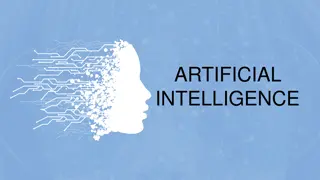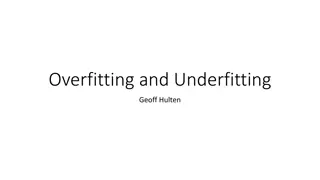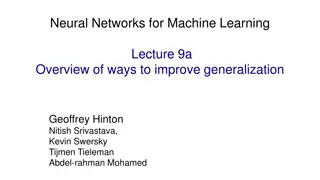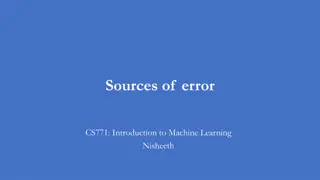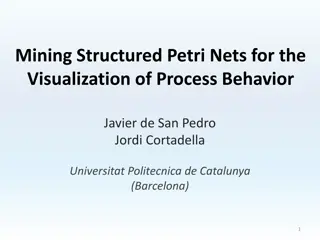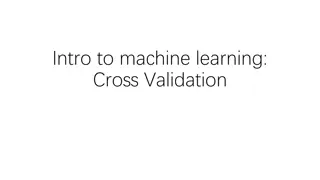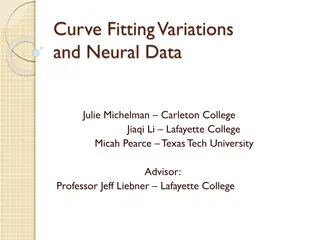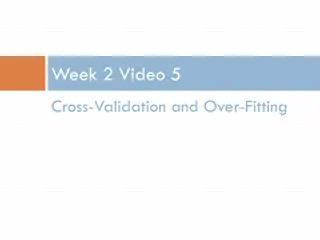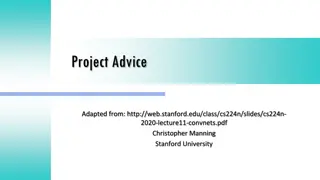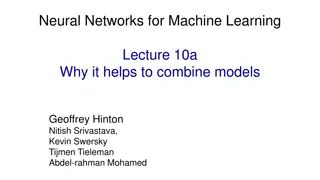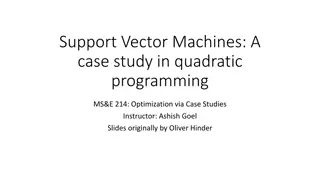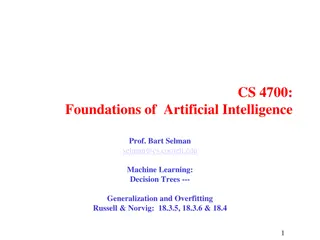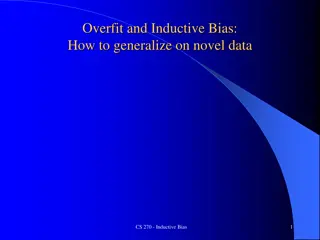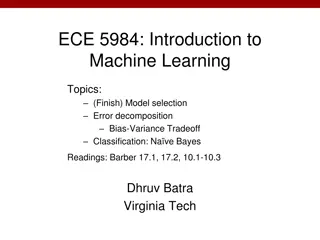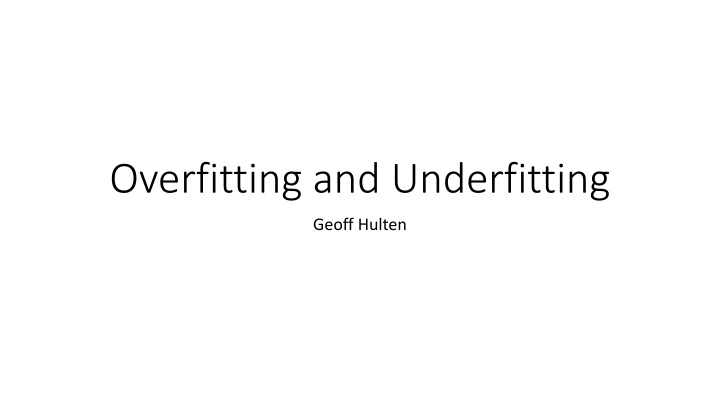
Statistical Bias and Variance in Machine Learning
Learn about the concepts of overfitting, underfitting, the No Free Lunch Theorem, inductive bias assumptions, statistical bias, variance, and the importance of visualizing bias and variance in machine learning models. Gain insights into common assumptions, model complexities, and the impact of bias and variance on model performance.
Download Presentation

Please find below an Image/Link to download the presentation.
The content on the website is provided AS IS for your information and personal use only. It may not be sold, licensed, or shared on other websites without obtaining consent from the author. If you encounter any issues during the download, it is possible that the publisher has removed the file from their server.
You are allowed to download the files provided on this website for personal or commercial use, subject to the condition that they are used lawfully. All files are the property of their respective owners.
The content on the website is provided AS IS for your information and personal use only. It may not be sold, licensed, or shared on other websites without obtaining consent from the author.
E N D
Presentation Transcript
Overfitting and Underfitting Geoff Hulten
No Free Lunch Theorem ???(?): 100% ???(?): 50% ????(?)= Generalization Accuracy of learner ? = Accuracy of ? on non-training examples ? = Set of all possible binary concepts ? = ?(?) ? set of all possible concepts Learner: A 1 2 Theorem: For any learner ?, 1 Learner: B |?| ?????? = Training Data Generalization Data (?) ? ?(?) ?(?) (?) When all concepts equally likely 1 1 0 1 0 Corollary: For any two learners ?1,?2: If a learning problem s.t. ?????1 > ?????2 Then a learning problem s.t. ?????1 < ????(?2) 2 1 1 1 1 3 0 0 0 0 4 0 1 0 1 ????(?): 100% ????(?): 50% ????(?): 50% ????(?): 100% Don t expect your favorite learner to always be best!
Inductive Bias Assumptions you make about how likely any particular concept is ? set of all possible concepts Common Assumptions: Model Structure: Linear model Axis-aligned tree structure Labels are clustered Model Selection: Train / Test / Validate Cross Validation Concept Complexity: Occam s Razor Regularization Choose Learning Algorithm Assume I.I.D Control Optimization ML techniques you ll in common use: - Generally useful Inductive biases - Stood the test of time Concepts you might learn using a particular inductive bias Stronger algorithms can learn more of ? Extra power comes with a cost ?
Statistical Bias and Variance Bias error caused because the model can not represent the concept Variance error caused because the learning algorithm overreacts to small changes in the training data TotalLoss = Bias + Variance (+ noise)
Visualizing Bias Goal: produce a model that matches this concept True Concept
Visualizing Bias Goal: produce a model that matches this concept Training Data for the concept Training Data
Visualizing Bias Bias Mistakes Goal: produce a model that matches this concept Training Data for concept Model Predicts + Bias: Can t represent it Model Predicts - Fit a Linear Model
Visualizing Variance Different Bias Mistakes Goal: produce a model that matches this concept New data, new model Model Predicts + Model Predicts - Fit a Linear Model
Visualizing Variance Mistakes will vary Goal: produce a model that matches this concept New data, new model New data, new model Model Predicts + Model Predicts - Variance: Sensitivity to changes & noise Fit a Linear Model
Bias and Variance: More Powerful Model Model Predicts + Powerful Models can represent complex concepts No Mistakes! Model Predicts -
Bias and Variance: More Powerful Model Model Predicts + But get more data Not good! Model Predicts -
Overfitting vs Underfitting Overfitting Fitting the data too well Features are noisy / uncorrelated to concept Modeling process very sensitive (powerful) Too much search Underfitting Learning too little of the true concept Features don t capture concept Too much bias in model Too little search to fit model 1 0.9 0.8 0.7 0.6 0.5 0.4 0.3 0.2 0.1 0 0 0.1 0.2 0.3 0.4 0.5 0.6 0.7 0.8 0.9 1
The Effect of Features Not much info Won t learn well Powerful -> high variance Throw out ?2 Captures concept Simple model -> low bias Powerful -> low variance New ?3
The Effect of Noise Low bias learner can fit noise, can overfit High bias learner can t fit noise, less affected
The Power of a Model Building Process Weaker Modeling Process ( higher bias ) More Powerful Modeling Process (higher variance) Simple Model (e.g. linear) Fixed sized Model (e.g. fixed # weights) Complex Model (e.g. high order polynomial) Scalable Model (e.g. decision tree) Small Feature Set (e.g. top 10 tokens) Large Feature Set (e.g. every token in data) Constrained Search (e.g. few iterations of gradient descent) Unconstrained Search (e.g. exhaustive search)
Ways to Control Decision Tree Learning Increase minToSplit Increase minGainToSplit Limit total number of Nodes Penalize complexity ? ^,??) + ? ???2(# ?????) ???? ? = ????(?? ?
Ways to Control Logistic Regression Adjust Step Size Adjust number of iterations / stopping criteria of Gradient Descent L-1 regularization Built-in feature selection Regularization ? # ???? ?? ^,??) + ? ???? ? = ????(?? |??| L-2 regularization Analytical solution ? ? # ???? ?? 2 + ? ?? ?
Modeling to Balance Under & Overfitting Data Feature Sets Feature engineering / selection More features -> generally less underfitting Too many features -> overfitting Noisy features -> lots of overfitting Amount more data -> less overfitting Cleanliness more noise -> more overfitting Label noise and context bugs Search and Computation Less search -> less overfitting, more underfitting Constrained search -> less overfitting, more underfitting Learning Algorithms Aligned with concept better representation -> less overfitting Representative power more power -> less bias; more variance Responsiveness to noise sensitive model -> more overfitting Parameter sweeps Examine results, plot them Ask why, investigate Respond accordingly
Summary of Overfitting and Underfitting Bias / Variance tradeoff a primary challenge in machine learning Internalize: More powerful modeling is not always better Learn to identify overfitting and underfitting Tuning parameters & interpreting output correctly is key



